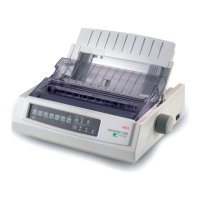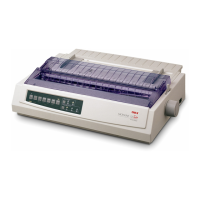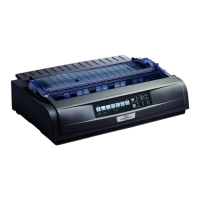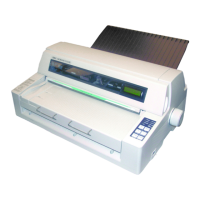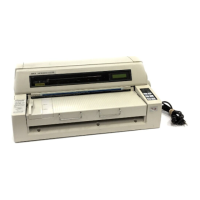Chapter 14: Epson - Standard Functions
14-13
n
2
= integer value (300 / 256) = 1
n
1
= 300 - (1 * 256) = 44
The command in BASIC is therefore:
CHR$(27);“$“;CHR$(44);CHR$(1);
With the command ESC\ the current print position can be moved
to right or left in steps of 1/120 inches with Utility and 1/180 inches
with Letter Quality. The difference from absolute positioning is that
the next print position in each case is calculated from the current
print position. If the print position is to be moved to the right, you
proceed as in the example shown above.
Moving the relative printing position to the left is a little more com-
plicated. First determine the number of necessary dots and subtract
this value from 65.536 (2
16
). Then calculate n
1
and n
2
using the above
formula and enter the values as parameters in the command sequence.
If the respective dot position is outside the set margins, the com-
mands for absolute or relative dot positioning are ignored. There-
fore use the table below to find the maximum value in number of
dots.
Print quality Narrow printer Wide printer
UTL
(120 dpi) 960 1632
LQ (180 dpi) 1440 2448
Function Dec. Hex. ASCII
Start indication 27 105 1 1B 69 01 ESC i SOH
Stop indication 27 105 0 1B 69 00 ESC i NUL
With this command you can switch on and off the mode which en-
ables indication of the next print position. The next print position is
indicated by the character »M« on the red line which is on the trans-
parent paper protector at the front on the print head carriage.
This mode can also be switched on and off via the control panel by
simultaneously pressing the SHIFT and PRINT QUALITY keys. If
this mode is activated, the data in the printer memory are printed
out. With this mode switched on the following commands cause
indication of the next print position by the above-mentioned mar-
king:
Indicate next
print position

